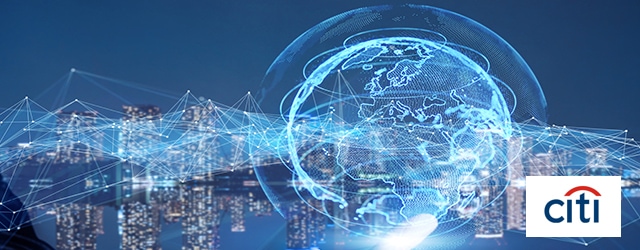Companies worldwide face an environment of change. Global supply chains are being reconfigured in response to a surge in protectionism and trade interventions.

The growth outlook is clouded by geopolitical, regulatory and economic uncertainties. Digital disruption is reshaping industry ecosystems, and innovation has become a focus for investors in valuing companies.1 In response, CEOs are transforming their enterprises through digitization.
Meanwhile, treasurers are as busy as ever. The London Interbank Offer Rate (LIBOR), underpinning much corporate borrowing, faces its demise at the end of 2021. Low or negative G10 interest rates and a strong dollar have become the norm, creating headaches for treasury in FX risk management and investing liquid cash assets. Major tax changes — in U.S. tax reform and the slow-burning but accelerating OECD Base Erosion and Profit Shifting (BEPS) initiative — are changing corporate trading models, with knock-on consequences for the distribution of cash and funding needs across enterprises. Fast-growing Emerging Markets have become core drivers of corporate revenue growth. With governments in many of these “complex countries” easing regulations, and fostering financial and technology innovation, demands for treasury resource time are increasing.
Meanwhile, rapid advances in technology and changes in financial services — perhaps best exemplified by the transformation of the payments landscape — can create a conundrum for treasurers: Should they invest in reengineering infrastructure now, or wait until the direction of travel becomes clearer?
Machine learning-enabled technologies, built on high quality aggregated datasets, offer the promise of greater automation, augmented decision-making and prescriptive analytics.”
All of this leaves many treasurers facing greater uncertainty than at any time over the past decade. We believe it is time to future proof treasury by digitizing, moving toward real-time operations, and focusing resources toward supporting enterprise growth while navigating the heightened risks — and leveraging the opportunities — that are likely to define the 2020s.
Reignite Collaboration to Digitize
Widespread automation of operational treasury processes through the deployment of new tools and techniques is now generally expected. Companies with the appetite and capacity to go beyond the basics are best placed to take advantage. Treasurers, long curious about the potential of digitization, are now investigating, evaluating and experimenting with new technologies. Machine learning-enabled technologies, built on high quality aggregated datasets, offer the promise of greater automation, augmented decision-making and prescriptive analytics. As an example, this may resolve the age-old corporate treasury challenge of improving the effectiveness and efficiency of forecasting. To this end, several Citi clients are participating in collaborative experiments to leverage emerging digital tools that aggregate fractured datasets more effectively, recognize patterns to adjust liquidity predictions, and simulate next-best actions based on policies and risk appetite. Against this backdrop, treasurers should partner across their enterprise and collaborate with banks, technology providers, and fintechs. Collaboration is a priority if treasury is to stay abreast of emerging technologies, identify digitization opportunities, and secure the financial and human capital to realize the opportunity.
…To be continued
To read more, visit: http://citi.us/2VBT1BA
1. Source: Citi Financial Strategy Group, 2020. The gap between the highest- and lowest-valued enterprises is at its greatest for a decade, with companies differentiated based on ability to innovate, exposure to protectionism, earnings reliability, and financial flexibility.
Sponsored by:
